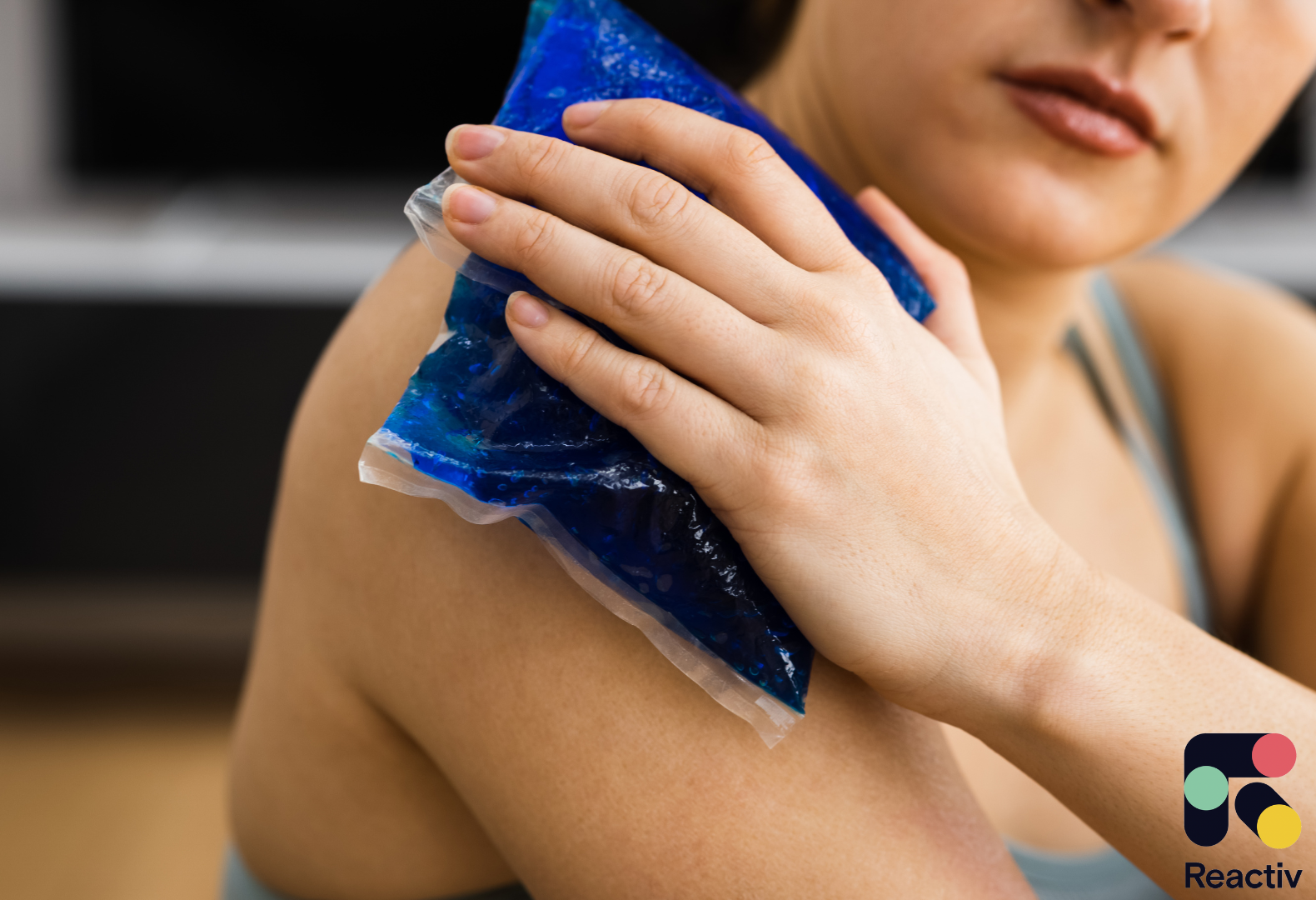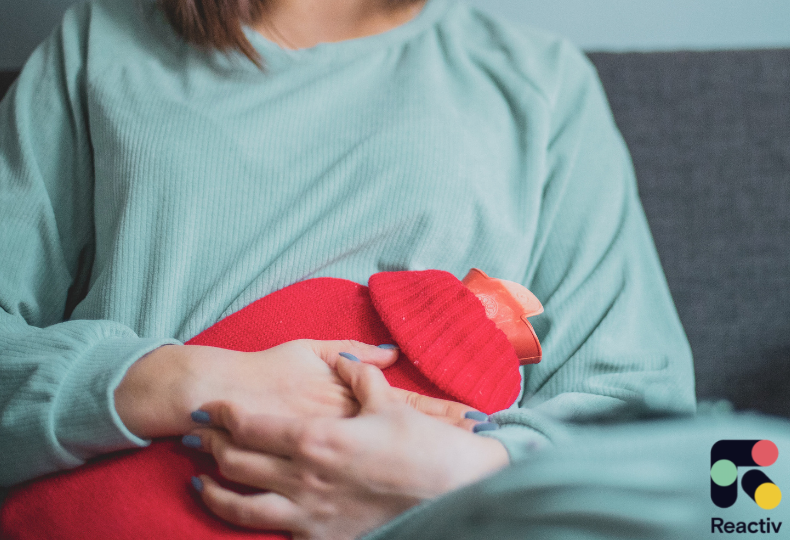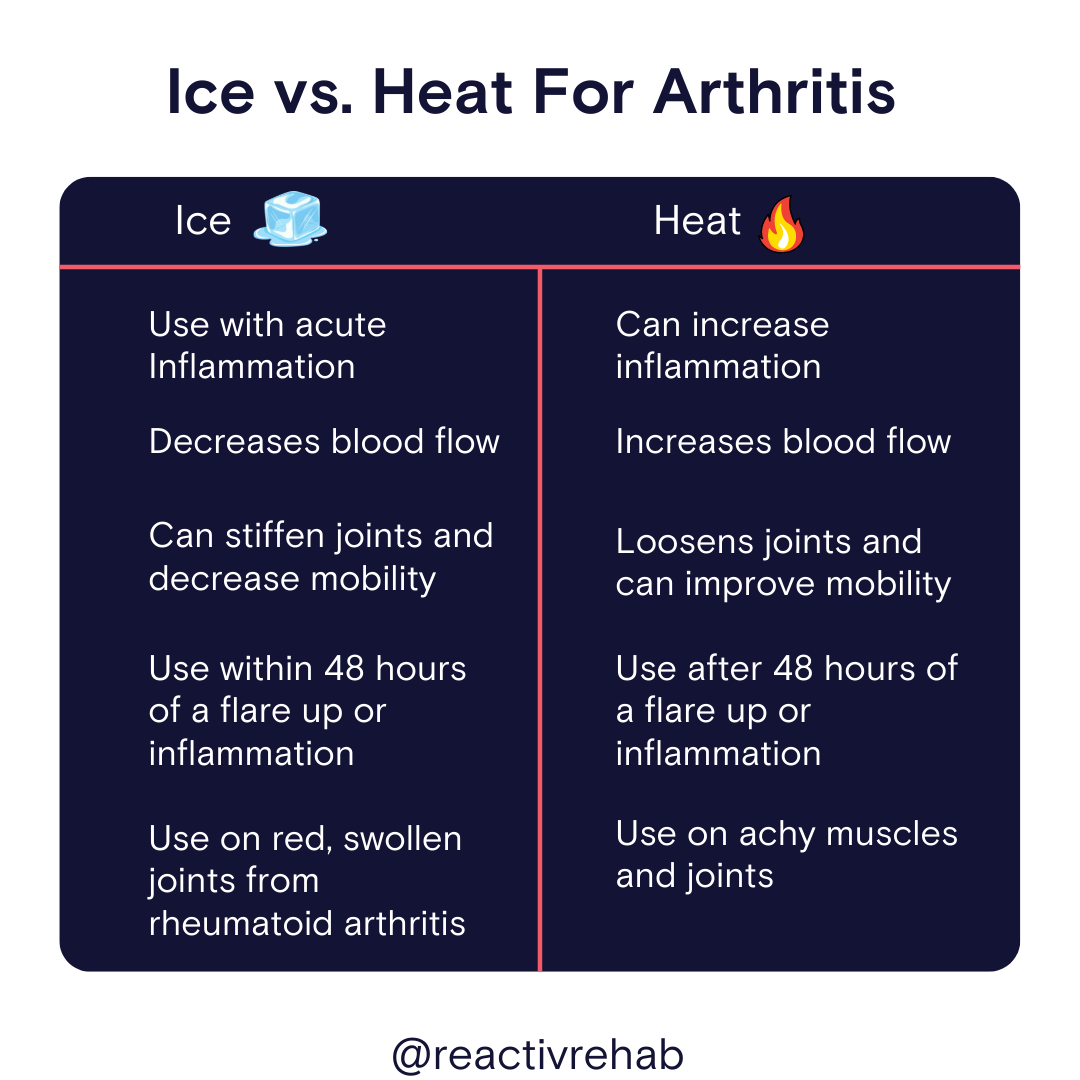
So is ice good for arthritis? The short answer is yes, it can be!
How Ice Works on the Body
Cold constricts or makes the blood vessels smaller in the body. The smaller blood vessels lead to less overall blood flow in a given area of the body that helps reduce swelling and inflammation.
If you’ve ever sprained your ankle or had a fall that left you with some swelling, your first instinct was likely to put ice on the injury. In those cases, you are using the cold or ice to reduce that acute inflammation and swelling.
With arthritis, you may not make that same connection between inflammation and ice. However, during a flare up with rheumatoid arthritis or inflammation with osteoarthritis, cold can help in that same way to reduce the body’s inflammation.
Cold can also slow the transmission of the pain signals (nociceptors) in the body, reducing the overall pain and be used as an analgesic.
Simple Ways to Apply Cold at Home
- Bag of Ice 🧊
- Bag of Frozen Vegetables 🥦
- Ice Cup Massage ❄️
Bag of Ice 🧊
Grab a sandwich or gallon sized resealable bag. Then fill it with ice cubes and seal the bag.
When deciding what size bag to use, think about the area you want to use the ice on. If it is small like your hand or wrist then a sandwich bag will be a good choice. If it is a larger joint that is bothering you, then a larger gallon size bag will likely be a better choice.
Bag of Frozen Vegetables 🥦
Nearly every freezer has a bag of frozen peas, corn, or random vegetables that you swear you’ll get around to cooking. If you don’t ever get up to cooking it, it will come in handy for your swollen and painful joints!
Simply just grab the veggies and place it on the painful area of the body.
Ice Cup Massage ❄️

This method works best if you have a small and concentrated area that is painful, like your wrist. It takes a little bit of preparation. The good news is that you can prepare a handful of ice cups to have ready for you in the freezer.
Start by using a small paper cup and filling it up with water. Place the cup in the freezer and leave in the freezer until the water is frozen solid.
When you are ready to use the ice cup, take the cup out of the freezer and peel off about half of the paper around the top of the cup.
Place down a towel under the body part that you will be using the ice cup on as the ice will melt! Hold onto the bottom of the cup where the paper is still intact and place the ice directly on the skin. Move the ice around in small circles on the skin around the painful area. You may notice some redness to the skin, it is normal.
It is important to keep the ice moving and not keep it in one place for too long, this can cause damage to the skin and to the tissue.
You’ll want to keep moving the ice around for about 5 minutes of time, which is likely about the same amount of time that it will take for the ice to melt.
⚠️Words of Caution When Using Ice ⚠️
Always be mindful of how long you are leaving ice on an area. Make sure to always set a timer! Generally, you only want to leave ice on for a maximum 20 minutes to prevent skin damage.
If you are having a hard time leaving the ice bag on for 20 minutes, try adding a towel or pillow case around the ice to give another barrier layer between the ice and the skin.
If you are using the ice directly on skin with the ice cup massage method, it is more intense than the ice bag or vegetable bag and you should only apply the ice for 5 minutes.
If you have neuropathy or decreased sensation in that area, avoid using cold as your skin is less sensitive to the temperature change and you can damage the tissue.
Ice does limit mobility and can make you more tense and stiff. If you are already limited in motion and need to use the painful joint, it might not be the best time to put ice on the joint.
What About Heat?🔥

You may have heard that heat is the way to go or arthritis and you’re technically not wrong. It really just depends on the goal of the thermal modality.
If you want to relax and loosen your muscles then heat may be the better option!
How Heat Works on the Body
Unlike cold, heat dilates the blood vessels and increases blood circulation bringing additional nutrients, oxygen, and blood to that area of the body. This can help to relax the muscles and loosen the joints.
Heat is most effective when you are feeling stiff. It can be great to do before an activity or task as a way to warm up and loosen the body.
Simple Ways to Apply Heat at Home
- Homemade Heating Pad ♨️
- Electric Heating Pad ⚡️
- Warm Bath 🛁
The nice thing about using heat, is that it is readily available in the comfort of your home.
Homemade Heating Pad ♨️
You can make your own heating pad at home. Start by using an old sock and fill it with about 1-2 cups of uncooked rice. You can either sew the open end shut or use baker’s twine to tie the open end shut. Make sure you double knot the twine so the rice does not come loose.
When you’re ready to use the heating pad just simply put it in the microwave and apply to the painful area.
Electric Heating Pad ⚡️
You can purchase an electric heating pad from your local pharmacy. These usually come in a bigger size and are better for the larger joints like the hip or knee.
Warm Bath 🛁
If you are using the heat for your hand and finger arthritis, this is a great option to try. To start, use a large bowl, sink, or bathtub and fill with enough water to cover the hand.
The water should be a comfortable warm temperature between 92-100 degrees Fahrenheit.
⚠️Words of Caution when using Heat⚠️
Heat can burn the skin! Always test the temperature before using it to ensure it is not too hot. Use heat for only about 20 minutes at a time to prevent burns.
In Summary

Ice and cold modalities are good for when you are having a rheumatoid arthritis flare up or some inflammation with osteoarthritis.
Heat can be beneficial before you do activity as a way to warm up your joints and muscles.
Always remember to check the temperature of both the heat and the cold and to be mindful of the length of time you are applying the modality.
You may prefer one modality over the other and that is normal. You can alternate between the two if you are stiff in the morning and then have a flare up at night time. But, be sure to allow at least a few hours in between the two modalities.
Overall, think about your goal with using the modality. Is your goal to reduce the immediate swelling? Then opt for ice. Is your goal to relax the joints and to improve mobility? Then opt for heat!
If your goal is to reduce pain, then either ice or heat may help with your arthritis pain!
Reactiv can help you manage your arthritis pain by connecting you with an occupational therapist, providing a personalized exercise plan, and recommending modifications to help relieve pain. To see if you are eligible for Reactiv, provide your contact details and we will reach out to you.
Disclaimer: This post is for general informational purposes only. It should not be used to self-diagnose and it is not a substitute for a medical exam, cure, treatment, diagnosis, and prescription or recommendation. You should not make any change in your health regimen, exercise regimen, or diet before first consulting a physician and obtaining a medical exam, diagnosis, and recommendation. Reactiv Inc. is not liable or responsible for any advice, course of treatment, diagnosis or any conclusions drawn, services or product you obtain through this post, video, infographic, table, photos, or site.
